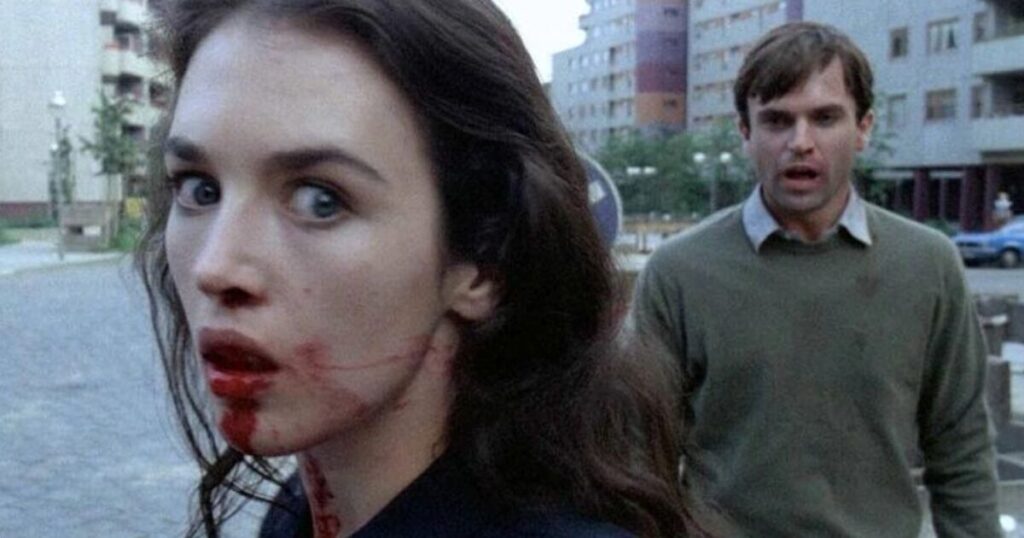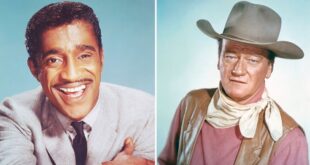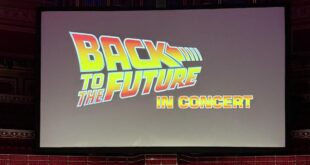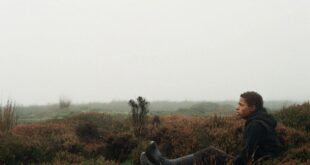
Horror is a year-round staple and consistently among the most-watched genres on streaming and TV – but interest spikes in the run-up to Halloween. With Halloween just around the corner, many Brits are wondering what to watch on the spooky night and for those who are hard to scare, entertainment experts have analysed movies to find a top 10 that are deemed only for the brave.
Entertainment experts at Playcasino, reviewed films that have been banned or restricted in various countries and compiled a clear, accessible list. The round-up outlines each title, summarises its plot and highlights the scenes or themes that prompted censorship, helping readers judge what to add – or avoid – on their watch list.
A Playcasino.com spokesperson said: “Banned or restricted films attract attention, but a good night depends on choosing what suits your audience. Check the age rating and content guidance, then pick a title that fits your group. If anyone is uncomfortable, pause or switch the film to keep the evening safe and enjoyable.” So without further ado, here are the top 10 horror movies that were banned around the world to watch this Halloween. A word of warning – these films are seriously messed up and it is hard to understand why they were created in the first place.
10. Possession (1981)
The film’s synopsis reads: “Mark’s wife Anna asks him for a divorce but he suspects that she is having an affair and hires a private investigator. Meanwhile, he begins an affair with his son’s teacher who is Anna’s lookalike.” The film was on the UK’s old “video nasty” list and has proven hard to find uncut for many years. Now better known for its performances and atmosphere, but its past makes it a notable entry.
9. Faces of Death (1978)
Faces of Death is a mondo horror film written and directed by John Alan Schwartz, credited under the pseudonyms “Conan Le Cilaire” and “Alan Black” respectively. The film’s plot follows: “A coroner (Dr. Francis B. Gröss) shows scenes of gruesome deaths from around the world both real and re-enacted.” The film was seized or banned in several regions for staged and alleged documentary footage of death. It has long been a fixture in video lore.
8. The Bunny Game (2010)
The Bunny Game is an avant-garde horror film that is notorious for its graphic and deeply controversial content. It was shot in black and white, and follows a heroin-addicted prostitute who is kidnapped and tortured by a sadistic truck driver. The film was co-written by director Adam Rehmeier and lead actress Rodleen Getsic, and is divided into three parts. It was refused a UK certificate for sexual threat and violence and the lack of clear story and focus on suffering were key reasons.
7. Nekromantik (1987)
The film’s synopsis states: “Nekromantik is a German cult horror film by Jörg Buttgereit that follows a necrophilic couple whose relationship is thrown into chaos by their morbid obsession. The story follows Robert Schmadtke, a man who works for a street-cleaning company that cleans up grisly accident sites. Robert and his equally morbid girlfriend, Betty, share a fascination with death and collect human organs and body parts in jars in their Berlin apartment.” The film was restricted or banned in multiple countries because of its taboo subject matter. It is often cited in debates about what should and should not be shown.
6. The Last House on the Left (1972)
The Last House on the Left is a horror film written and directed by Wes Craven in his directorial debut, and produced by Sean S. Cunningham. The film stars Sandra Peabody, Lucy Grantham, David Hess, Fred J. Lincoln, Jeramie Rain, and Marc Sheffler. The film’s synopsis states: “The plot follows Mari Collingwood (Peabody), a teenager who is abducted, raped, and brutally murdered by a group of violent fugitives led by Krug Stillo (Hess). When her parents discover what happened to her, they seek vengeance against the killers, who have taken shelter at their home.” The Last House on the Left was banned in the UK for years, then passed in cut form and later re-evaluated. It is widely known for shock tactics and a grim tone.
5. I Spit on Your Grave (1978)
I Spit on Your Grave (originally titled Day of the Woman) is written and directed by Meir Zarchi. The film’s synopsis states: “Jennifer Hills (Camille Keaton), a fiction writer based in New York City exacts revenge on her four tormentors who gang rape and leave her for dead.” The film was cut or banned in a range of territories for sexual violence. Some regions later allowed edited versions, but it still raises questions about revenge stories on screen.
4. Grotesque (2009)
Grotesque is an exploitation horror film written and directed by Kōji Shiraishi. The film’s synopsis reads: “A doctor with extreme and depraved needs kidnaps a couple and forces them to compete in a game of torment that slowly erodes their hopes of survival.” It was refused classification in the UK for sexualised cruelty and it focuses on prolonged abuse rather than plot, which led to a ban at the time.
3. The Human Centipede 2: Full Sequence (2011)
The Human Centipede 2 (Full Sequence) is a psychological body horror film written, directed, and co-produced by Tom Six. The film’s synopsis reads: “A depraved mama’s boy (Laurence R. Harvey) goes on a killing and collecting spree to recreate the experiment portrayed in The Human Centipede (First Sequence).” First refused a UK certificate, later released with significant edits. Censors cited sadistic content and the risk of harm and it became a talking point about where limits sit.
2. A Serbian Film (2010)
A Serbian Film is an exploitation psychological horror thriller film produced and directed by Srđan Spasojević in his feature directorial debut, with Aleksandar Radivojević co-writing. The film’s synopsis reads: “An ageing porn star agrees to participate in an art film in order to make a clean break from the business, only to discover that he has been drafted into making a paedophilia and necrophilia themed snuff film.” This film was pulled or restricted in many places for extreme sexual violence, and the UK versions have only been available with heavy cuts. It is widely discussed for its themes and impact.
1. Cannibal Holocaust (1980)
Cannibal Holocaust is a cannibal film directed by Ruggero Deodato and written by Gianfranco Clerici. The film’s synopsis reads: “During a rescue mission into the Amazon rainforest, a professor stumbles across lost film shot by a missing documentary crew whose goal was to study the region’s indigenous cannibalistic tribes.” Banned in several countries for graphic violence and scenes that led to court cases. Many later versions were cut for release, but it remains one of the most argued-about titles in the genre. Cannibal Holocaust was banned at the time of release.
 Latest Breaking News Online News Portal
Latest Breaking News Online News Portal






